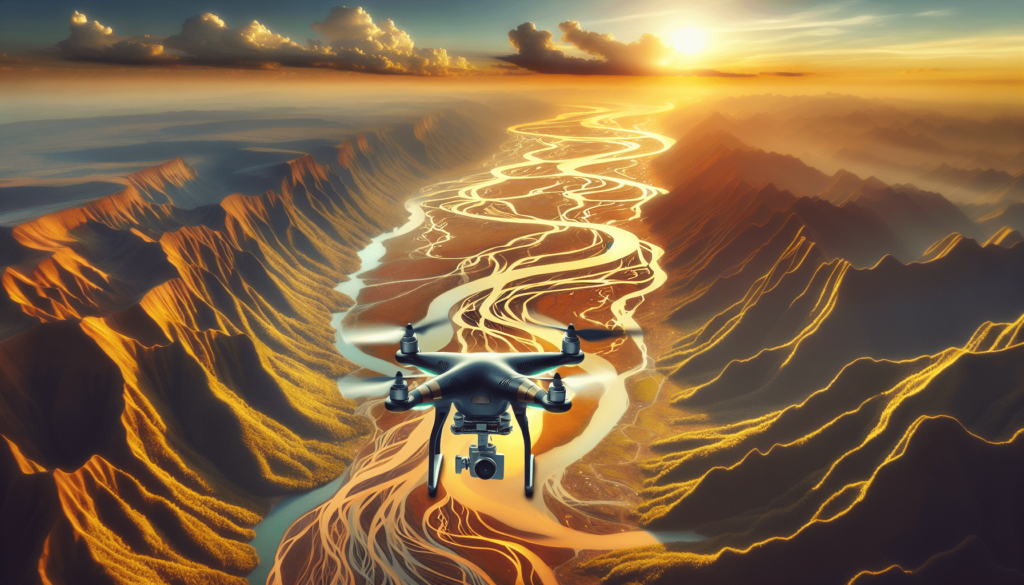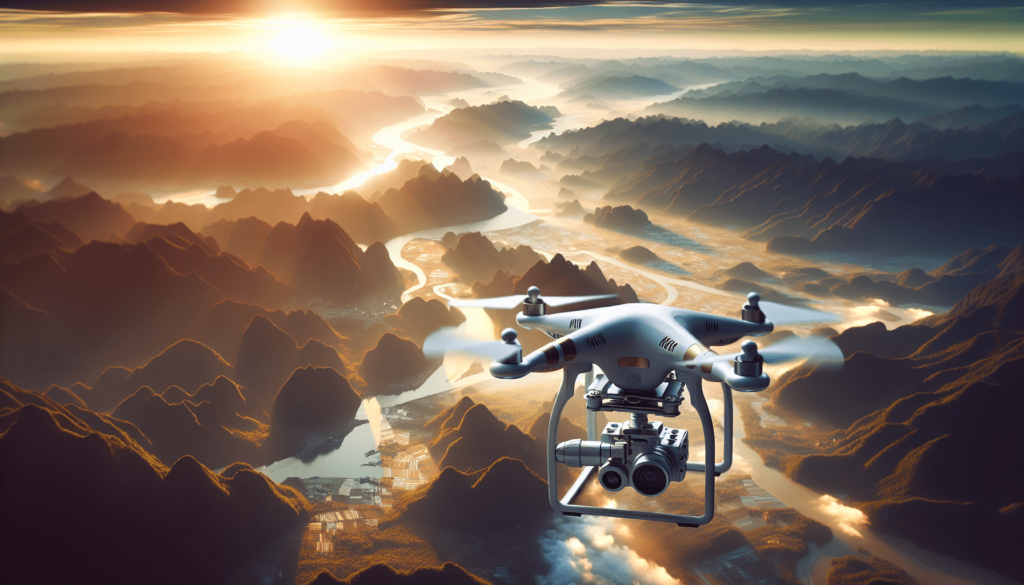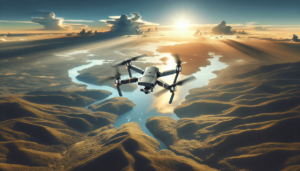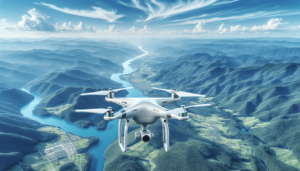Have you ever gazed at breathtaking drone shots and wondered how on earth the creators capture such cinema-like beauty from above? We’ve been there, captivated by the sweeping vistas and intricate details drone footage offers. Drones have opened up a new dimension in photography, transforming the art of capturing images and videos in ways that were once dreams. Imagine soaring over vast landscapes, capturing epic sunsets, or following winding roads through forests, all with the gentle hum of technology hovering above. Today, we’re going to share some advanced tips for achieving not just good, but cinema-worthy drone footage. So, let’s get into it, shall we?

Understanding Your Equipment
Before we press record, let’s consider the star of our cinematic endeavor: our drone. Knowing our equipment inside and out is crucial. It’s like knowing the quirks of an old friend – their likes, dislikes, and how to get the best out of them.
Choosing the Right Drone
There are drones aplenty, each offering unique features. Whether it’s a heavy-duty model with a top-notch camera or a more compact, agile one, our choice should align with the footage goals we have in mind. If our aim is cinematic quality, we should opt for a drone with at least a 4K camera.
Mastering Controls
The only way to capture stunning shots is to have steady hands – or in this case, steady controls. Practicing the controls until we can maneuver confidently is vital. Imagine trying to paint a masterpiece with a shaky hand; it doesn’t quite work as well.
Planning Our Shots
Even before a takeoff, visualizing and scheduling shots makes a world of difference. We’re not only operating a drone but directing a cinematic experience.
Storyboarding
Think of ourselves as storytellers. What narrative do we want our footage to relay? A well-planned storyboard outlines each scene so we can transition from one breathtaking view to another smoothly.
Scouting Locations
Who doesn’t love a bit of location scouting? It’s where we let our imaginations run free, searching for landscapes that inspire awe. Consider local laws and regulations on drone flying—no cinematic frame is worth a legal hiccup.
Perfecting Composition
Just like traditional photography, composition is king in aerial photography. We compose with depth, lines, and perspective, bringing those elements to life from the sky.
Rule of Thirds
Divide the frame into nine equal segments. Placing our subject at the intersection points often creates visually balanced and exciting shots. Even in the sky, rules of composition reign supreme.
Leading Lines
Natural lines like roads, rivers, and treetops can guide the viewer’s eyes to our focal point, making the shot both dynamic and engaging. It’s like leading a dance, we guide them to see what we see.
Optimizing Camera Settings
Knowing how to tweak our camera settings can dramatically alter our footage quality. Drones today offer myriad settings to achieve the perfect shot.
Shooting in RAW format
By capturing images in RAW, we allow ourselves flexibility in post-production. It’s akin to capturing a wide spectrum of colors, ready to be tuned to perfection.
Adjusting ISO and Shutter Speed
Low ISO settings minimize noise, enhancing clarity. Shutter speed control is pivotal for capturing motion smoothly, whether fast or slow. A general rule we follow is to set the shutter speed to double the frame rate.
Utilizing ND Filters
Neutral Density (ND) filters are our trusty sidekick. They control exposure in overly bright conditions, acting like sunglasses for our camera, helping us maintain consistent exposure even under the harsh sun.

Movement and Angles
Movement transforms footage from static to cinematic. The way our drone dances in the air dramatically affects the storytelling quality of our shot.
Exploring Dynamic Movement
Simple panning and tilting are great, but incorporating dynamic movements—like orbits or fly-throughs—adds a layer of complexity and intrigue to our shots. We create a sense of journey and discovery.
Experimenting with Altitude
Altitude impacts how viewers interpret the scale and detail of our subject matter. Playing around with varying heights can provide unique perspectives and emphasize certain elements of the scene.
Lighting the Scene
Ah, lighting – the unsung hero of any footage. It paints the mood, the shadows, highlights, and everything in between.
The Magic of Golden Hour
That wondrous time just after sunrise or before sunset, where the soft, golden light bathes everything in warmth. We aim for this hour to capture our scenes in their most flattering light, casting a spell of cinematic magic.
Acknowledging Weather Conditions
Weather can be unpredictable, yet it offers an array of dramatic opportunities. Clouds may diffuse harsh sunlight, while a sudden fog blankets the landscape with mystery. Understanding weather patterns helps us decide the mood for our footage.
Advanced Editing Techniques
Editing can polish our raw footage into an impactful narrative. Think of it as chiseling away to unveil a sculpture; every cut, color grade, and transition matters.
Color Grading
To evoke the right emotions, we delve into color grading. It’s the finishing touch that sets the mood—cool tones for a calm, latent atmosphere, or warmer hues for vitality.
Incorporating Sound Design
Sound enhances the visual experience, breathing life into static silence. Whether it’s ambient noise or a stirring musical score, sound design is our ally in creating immersive storytelling.
Creating A Cinematic Flow
Editing is not merely combining clips; it’s about creating a seamless narrative. The way our footage transitions from one scene to another influences its cinematic quality.
Crafting Smooth Transitions
Whether through cuts or fades, we ensure transitions feel natural and deliberate. Abrupt shifts can jolt viewers out of immersion, while smooth flows guide them through our narrative.
Timing for Impact
Timing influences pacing; slower scenes evoke contemplation, while faster ones inject energy. Mastering timing is crucial for delivering the emotional beats we envision.
Telling a Story
Ultimately, what separates ordinary footage from cinematic genius is storytelling. Every shot should serve the narrative, transporting viewers into a world seen through our lens.
Developing a Narrative Arc
Even a montage of landscape shots can tell a story. By establishing a clear beginning, middle, and end, we keep audiences engaged and yearning to see what comes next.
Infusing Personal Style
Everyone has a unique style, and embracing it sets our work apart. Be it a penchant for epic wide shots, emotional close-ups, or quirky angles, infusing personal flair makes our projects distinctly ours.
Staying Legal and Safe
In our quest for the perfect shot, ensuring safety and legality is paramount. We’d hate for our creative adventure to be grounded by avoidable oversights.
Understanding Rules and Regulations
We’re diligent in keeping up with local drone laws. Knowing where we can and can’t fly ensures respect for privacy and airspace regulations, saving us from potential fines or worse.
Prioritizing Safety Measures
Safety isn’t just a guideline; it’s a priority. Always checking equipment, battery levels, and weather conditions before flying minimizes risks. Remember, our drone is not just gear, but an investment in our creative endeavors.
Embracing Creativity
The rules can guide us, but breaking them often leads to the unexpected magic of creation. Once we master the basics, letting our creativity take flight can result in footage that defies convention.
Testing Unorthodox Shots
Uncommon angles or perspectives can sometimes yield the most captivating results. By daring to push boundaries, we might stumble upon something extraordinary.
Keeping a Fresh Perspective
Getting stuck in a rut of usual shots? Changing our perspective—literally and figuratively—can open doors to new ideas. Always be open to learn and adapt to new methods.
Continuous Learning and Community
Lastly, staying motivated by learning and being part of a community can feed our passion. It’s a reminder that creativity thrives in connection with others.
Engaging with Other Creators
Sharing experiences and exchanging tips with other drone enthusiasts fuels inspiration. Community forums, online groups, or meetups are just some ways we stay connected and inspired.
Staying Updated with Trends and Technology
The world of drone technology evolves rapidly. By keeping an eye on emerging trends and new tech, we continuously refine our craft, ensuring our footage remains cutting-edge and relevant.
And there we have it! Our guide to capturing stunning, cinematic drone footage isn’t just about technical skills but also about embracing creativity, safety, and community. We hope you find as much joy in crafting these aerial masterpieces as we do in sharing these tips with you. Let the skies be our canvas; there’s always more to capture, more stories to tell, and more beauty to reveal from above. Here’s to making every shot a cinematic marvel!
![7 Essential Aerial Photography Tips For Beginners [2025]](https://droneaperture.com/wp-content/uploads/2025/01/7-essential-aerial-photography-tips-for-beginners-2025-1-300x171.png)

